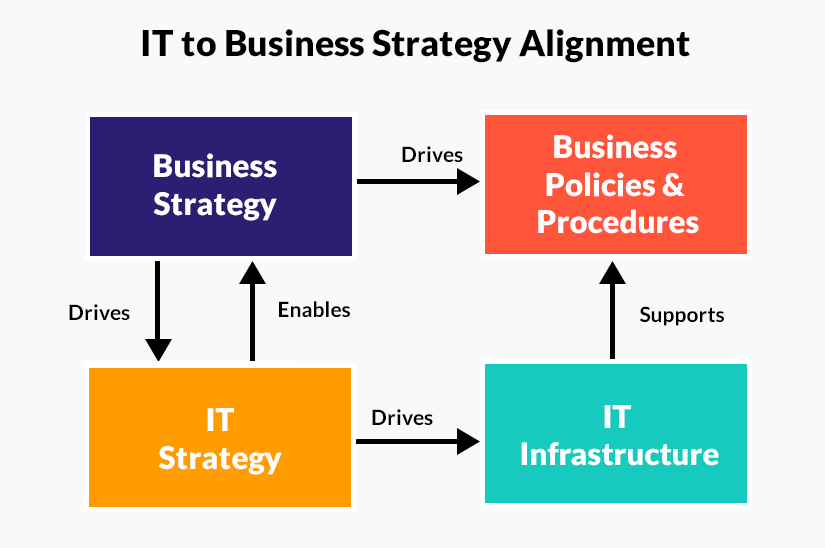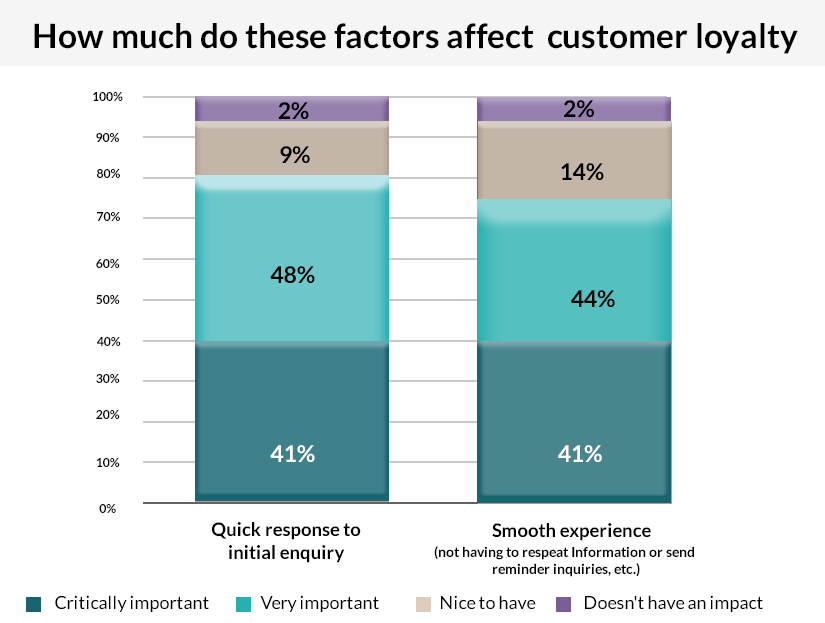The Importance Of Aligning Business and IT Workflow

The rise in popularity of open-concept workspaces, integrated dashboards, and intuitive software points to one thing: collaboration is the key to success in the modern competitive landscape.
Traditionally, when you think of the business side of your company and the IT side, there is a very clear dichotomy. The teams that drive business for your company - such as sales, customer support, and marketing - have an outward focus. They are primarily concerned with expanding your customer base and driving revenue for your company. IT teams, on the other hand, have an inward focus. They are responsible for keeping the ship running smoothly by troubleshooting any issues that arise and maintaining the company’s IT infrastructure. These clearly defined roles meant that there was little overlap in the priorities of both departments. But in reality, IT and business are two sides of the same coin, and investment in technology must solve business challenges. Their north star metric needs to be the improvement of customer experience and that is only possible when both teams are completely aligned.

Moving away from the ITSM model
The siloed functions of business and IT are reflected in the structure of ITSM software. ITSM (IT Service Management) platforms typically have a very high technical threshold, meaning they can only be used by individuals with an IT background. This effectively blocks non-IT team members from using the software. When this happens, it’s not just the business teams that are affected, but the IT teams too. IT becomes the sole agent for technical support, regardless of what the incoming request is or how simple it is to resolve. This puts a tremendous load on the IT team and can result in lags for the organization as a whole.
Business process automation moves away from this approach and uses more inclusive processes that increase involvement from non-IT personnel. This type of approach recognizes that when a larger number of tickets can be resolved through IT process automation and self-service, issues get closed faster and IT has more time to devote to strategic initiatives.
What happens when you create a workflow that integrates both teams? Your customers are happier because of reduced wait times and your team has more time to devote to innovation that can drive success for your company.
Also Read: Why CIOs Say They Will Spend 3.7% of Premium on Tech in 2021
Benefits of an aligned business workflow
There are five main benefits you can expect from ensuring your business and IT processes are aligned in a single system workflow.
-
Reducing redundancies
Business workflow automation can significantly reduce time and money. Without IT process automation, an employee would have to raise a request with the IT team, and then a manager would manually assign it to an IT team member. Because of the large volume of incoming requests, the ticket would get added to the queue and there would be no clear SLAs on resolution times. The requestor might also have to follow up manually, multiple times, to track the status of the ticket.
With business process automation, many of these time-consuming processes would get eliminated. The ticket would automatically be assigned to the most appropriate agent and the status of the ticket could be tracked on the dashboard. Setting up workflow automation can also help you identify any redundancies in the system and eliminate them. This creates a simplified process that will result in faster resolution times.
-
Strategic innovation
When business and IT are not aligned, It generally translates to less visibility into the larger organizational goals. This can result in a situation where your IT team is working on firefighting everyday tech issues without a focus on the larger picture.
Conversely, because of the separation from the IT department, your leadership might not be aware of the untapped capabilities of the team. They might also not understand any drawbacks that the current IT workflow has, which could be impeding efficiency.
When tech teams and businesses are aligned in an integrated system workflow, the fundamental thought process of both teams begins to change as they begin to view themselves as part of the same organization. With a clearer understanding of the overarching goals, IT begins to work towards creating solutions that can help business teams achieve them. And as a business starts working closer with IT, it becomes invested in finding the best IT software and platforms that can help the team perform their roles better.
Also Read: 7 Signs of a Legacy System - Sign 6 Might Surprise You
-
Greater customer satisfaction
Numerous studies have shown that there is a direct relationship between customer wait times and customer satisfaction. The longer a customer has to wait for their issue to be resolved - particularly for time-sensitive issues - the less likely they are to feel valued by your company. And when they don’t feel valued, they switch loyalty and you lose their business. The number one way to reduce customer wait times is to improve your internal process. After all, no service rep deliberately wants to keep a customer waiting longer than they have to. This invariably happens only when the customer rep has to pass through numerous internal hoops to get the issue resolved.

When your IT workflow is geared towards improving business outcomes, then leadership gets invested in new technology to improve agility. TAn outcome of improved process efficiencies is that customer requests can get resolved much faster and your customer has a more positive experience with your organization.
-
Lower costs
Inefficient software is one of the most common hidden costs in a company. Lack of automation in business could be impacting your company’s ability to scale and can require more manpower to operate. Once the business begins to work more closely with IT, they will start seeing the real cost benefits of investing in more efficient software. Newer software solutions come with automated bots, extensive knowledge bases, and self-service options that keep operational costs low. This means you can expect fewer IT-related expenses on your annual balance sheet.
A business strategy without alignment with IT is like workers on an assembly line making different parts of the car without knowing what goes where. SimpleSolve’s insurance software is built on the principle of providing greater visibility and agency to your teams. Our intelligent bot and business workflow automation reduce average handling time, while our simple interface ensures all teams can work seamlessly out of it. This will empower your teams to create a workflow that improves agility and fuels innovation.
Topics: Intelligent Automation









